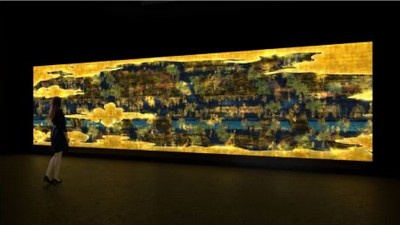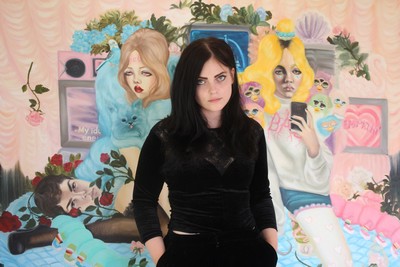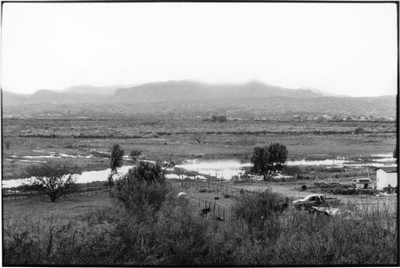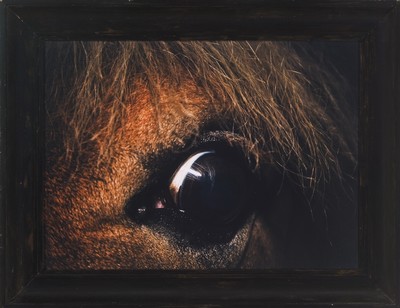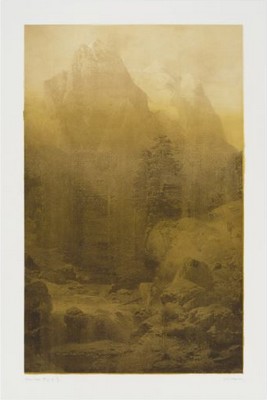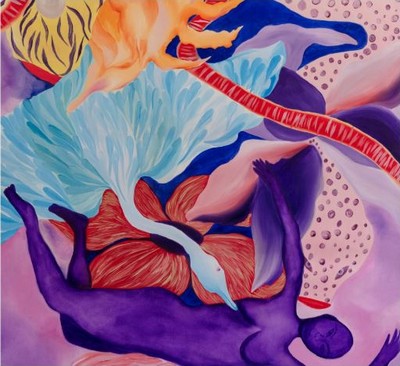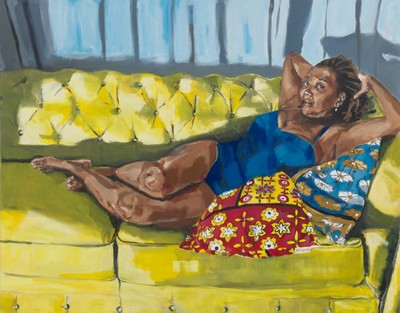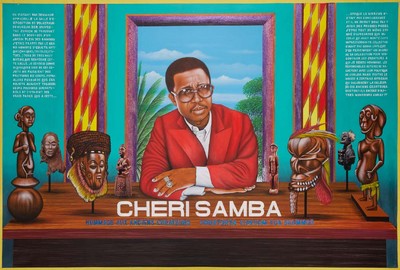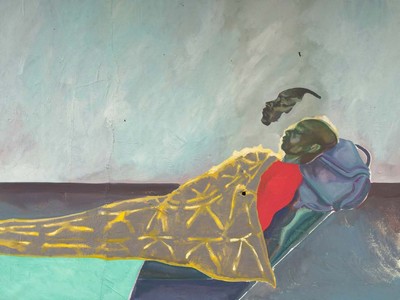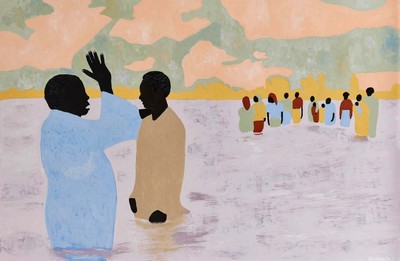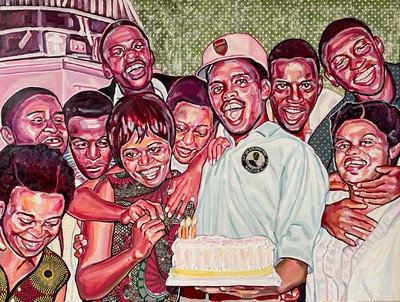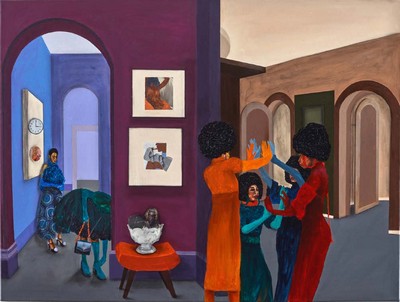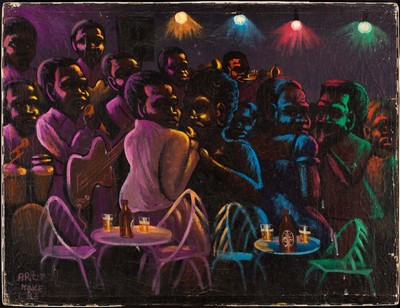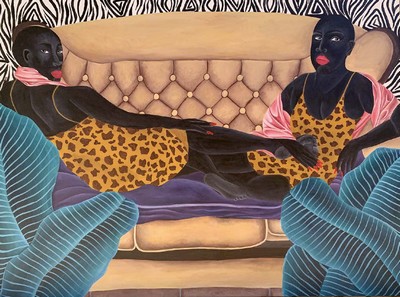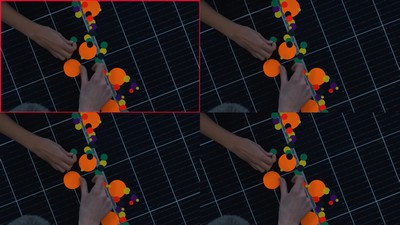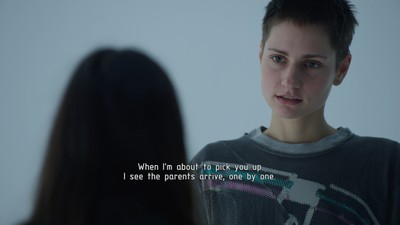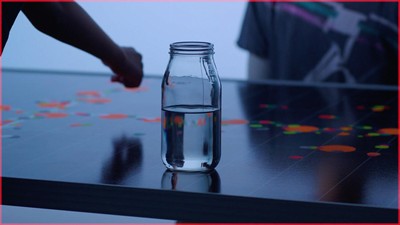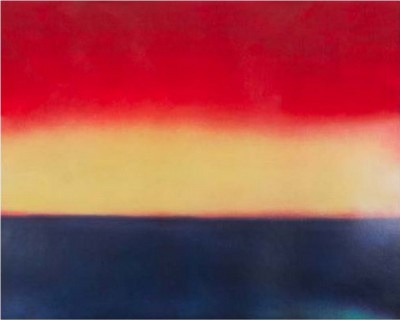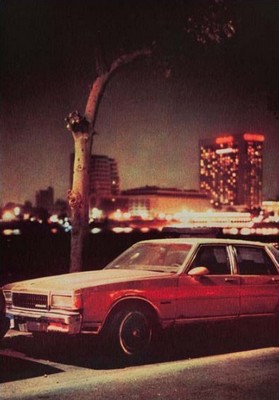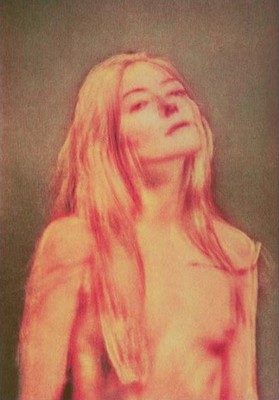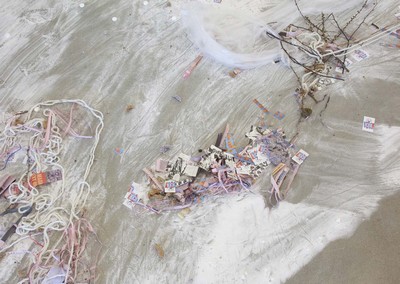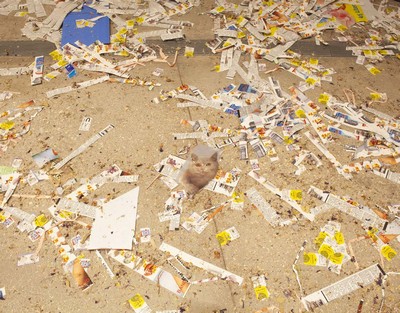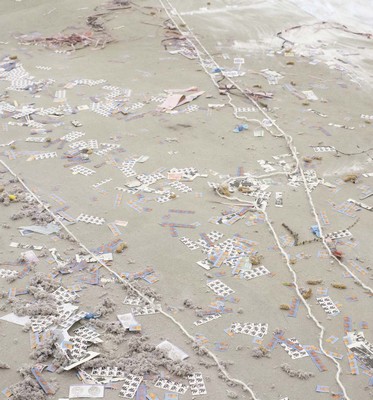When We See Us
Un siècle de peinture figurative panafricaine
Kunstmuseum Basel | Gegenwart
25 mai - 27 octobre 2024
Sungi Mlengeya
Constant III, 2019
Acrylic paint on canvas, 140 x 140 cm
Courtesy of the Ditau Collection
Que Se Chama Amor, 2022
Acrylic on canvas, 162 x 125 cm
Courtesy the artist, Simões de Assis and Luce Gallery
Avec l’exposition When We See Us, le Kunstmuseum Basel présente un kaléidoscope qui raconte un siècle de peinture figurative noire. Il s'agit d’une reprise de l’exposition organisée au Zeitz Museum of Contemporary Art of Africa au Cap. Installée dans les espaces du Gegenwart, elle réunit plus de 150 peintures d’environ 120 artistes, jamais exposées en Suisse pour la plupart, et apporte un éclairage sur la puissance et la dimension politique de la « Black Joy ».
Le titre de l’exposition s’inspire de la mini-série de Netflix When They See Us (2019). La réalisatrice afro-américaine Ava DuVernay y aborde la manière dont des Blancs perçoivent indifféremment de jeunes Noirs innocents comme de potentiels criminels constituant une menace. En remplaçant « They » par « We », l’exposition opère un changement de perspective et offre ainsi un espace aux artistes pour montrer la manière dont il voient leur condition. Elle accorde une place centrale à leur perception propre et révèle comment la vie des Noirs ne cessa d’être représentée par d’autres de manière biaisée et fausse.
When We See Us est le résultat de recherches approfondies menées par Koyo Kouoh, directrice et cheffe curatrice du Zeitz MOCAA au Cap, et son équipe. De novembre 2022 à septembre 2023, ce musée dédié à l’art contemporain africain le plus grand au monde a présenté cette vaste exposition. Celle-ci est représentative d’une nouvelle perception de soi et de l’autodétermination d’artistes noir.e.s qui, après des siècles de domination par le canon artistique blanc, écrivent leur propre histoire de l’art. Au Kunstmuseum Basel, elle succède à une série d’expositions monographiques consacrées à des artistes afro-américain.e.s : Theaster Gates, Sam Gilliam, Kara Walker et dernièrement Carrie Mae Weems. Ces expositions et bien d’autres explorent la « Blackness » dans le monde, notamment au regard des traumatismes et des aspects du colonialisme. D’après les commissaires Koyo Kouoh et Tandazani Dhlakama, When We See Us se concentre quant à elle sur le quotidien ainsi que sur la « puissance de la joie », éliminant ainsi les stéréotypes liés au racisme, à la violence ou aux crises. L’exposition s’attache à proposer aux individus un nouvel angle de vue tour à tour solennel, puissant et digne : « Il faut que nous parlions beaucoup plus de nous-mêmes, d’une manière qui stimule notre esprit » disent-elles.
Sundials and Sonnets, 2019
Oil on canvas, 137.2 x 172.7 cm
Credit : Pascale M. Thomas and Tayo E. Famakinwa
Six sections du quotidien
Plus de cent cinquante oeuvres d’art sont réparties en six chapitres d’exposition : Le quotidien, Joie et allégresse, Repos, Sensualité, Spiritualité et Triomphe et émancipation. Les salles ne sont pas aménagées de manière chronologique, ni selon le pays d’origine ou le lieu de travail des artistes.
La déclinaison en des thèmes universels indique également pour la première fois que les artistes ont travaillé aux mêmes thématiques à différents endroits en Afrique et au sein de la diaspora africaine. Ainsi, des parallèles iconographiques s’esquissent entre les oeuvres de Romare Bearden (1911–1988), artiste afro-américain, et de George Pemba (Afrique du Sud, 1912–2001), ou entre le Congolais Chéri Samba (*1956) et l’Afro-Américain Barkley L. Hendricks (1945–2017).
When We See Us occupe l’ensemble des espaces du Kunstmuseum Basel | Gegenwart. Comme au Zeitz MOCAA, Ilze Wolff, associée de l’agence Wolff Architects au Cap, a été chargée de la scénographie, tandis que le musicien Neo Muyanga a conçu les stations sonores. Une frise chronologique précise le contexte de création des oeuvres exposées et un audioguide adapté pour le Kunstmuseum Basel fournit des informations sur les oeuvres.
Le programme qui accompagne l’exposition met en avant différentes voix noires à travers la musique, la littérature, des ateliers, des visites guidées, des groupes de discussion et des événements universitaires. Au rez-de-chaussée, une salle spécialement conçue pour accueillir ce programme sert de lounge public ainsi que de lieu de rassemblement et d’événements pour les ateliers, séminaires, concerts et autres.
Chapitres d’exposition et liste des artistes
Triomphe et émancipation
Le sentiment de fierté envers sa propre histoire et ses réussites malgré l’adversité et une oppression longue de plusieurs siècles figure au coeur de ce chapitre. Au rez-de-chaussée du musée, les visiteur.euse.s croisent des icônes mondialement connues, à l’instar du tableau de Chéri Chérin Obama Revolution (2009), sur un pied d’égalité avec des figures certes anonymes, mais fortes, comme dans le Portrait of a Sudanese Gentleman (1951) d’Ibrahim El-Salahi. Les personnes représentées s’occupent des biens culturels des ancêtres ou sont des hommes et des femmes politiques engagés et des individus ayant obtenu le succès et la reconnaissance sociale.
Hommage aux anciens créateurs, 2000
Acrylic on canvas, 135 x 200 cm
Private Collection, courtesy of MAGNIN-A Gallery, Paris
Artistes : Benny Andrews, Margaret Taylor Burroughs, Chéri Chérin, Kudzanai Chiurai, Aboubacar Diané, Ibrahim El-Salahi, Ben Enwonwu, Gherdai Hassell, Wifredo Lam, Akinola Lasekan, Mustafa Maluka, Eria Nsubuga ‘Sane’, Augustin Okoye, George Pemba, Chéri Samba, Mmapula Mmakgabo Helen Sebidi, Gerard Sekoto, Katlego Tlabela, Cyprien Tokoudagba
Sensualité
Sensualité présente des corps noirs de manière intime et avec aplomb comme ne l’avait guère permis le canon visuel occidental. Le modèle noir, d’après Félix Vallotton (2019) de Roméo Mivekannin fait directement écho à ce canon, de même que Reclining Nude with Lemon (2021) de Sahara Longe. Ce chapitre montre toute la palette de la sensualité, de l’amour et des relations intimes. L’ensemble des oeuvres ont en commun l’autodétermination des protagonistes.
Within Reach 7, 2002
Gouache, India ink, charcoal and gold leaf on paper, 114 x 69 cm
© Courtesy of Jochen Zeitz Collection
Artistes : Nina Chanel Abney, Olusegun Adejumo, Tunji Adeniyi-Jones, Maxwell Alexandre, Tiffany Alfonseca, Dominic Chambers, Somaya Critchlow, Njideka Akunyili Crosby, Elladj Lincy Deloumeaux, Aboubacar Diané, Ibrahima Kébé, Yoyo Lander, Sahara Longe, Danielle McKinney, Roméo Mivekannin, Moké, Geoffrey Mukasa, Chris Ofili, Kambui Olujimi, Tschabalala Self, Monsengo Shula, Mickalene Thomas, Bob Thompson, Kehinde Wiley.
Spiritualité
Selon les commissaires de l’exposition, il est difficile d’imaginer un quotidien noir sans spiritualité. Cette section représente le « triple héritage » décrit par l’écrivain kenyan et américain Ali Mazrui (1933-2014) dans son livre The Africans: A Triple Heritage : la "Black Life" perméable aux rituels et traditions locales, islamiques et chrétiennes. Les oeuvres présentées ici montrent une spiritualité vivante, à l’instar de Genesis Creation (1989) de Jacob Lawrence et The Dumb Oracle (2019) de Michael Armitage.
You, Who Are Still Alive, 2022
Oil on Lubugo barkcloth, 150 x 200 cm
Kunstmuseum Basel, purchase with funds from the Efren Fund,
Freiwillige Akademische Gesellschaft Basel
Photo : Max Ehrengruber
© Michael Armitage
To Live Long Is To See Much (Ritual Bathers III), 2020
Oil on canvas, 152.4 x 233.6 cm
Courtesy of Jorge M. Pérez Collection, Miami
Artistes : Michael Armitage, Gerard Bhengu, Wilson Bigaud, Edouard Duval-Carrié, Aaron Douglas, Scherezade García, Jacob Lawrence, Cassi Namoda, Malangatana Ngwenya, Kambui Olujimi, Emma Pap’, Naudline Pierre, Prosper Pierre-Louis, María Magdalena Campos Pons, Cinga Samson, Gerard Sekoto, Devan Shimoyama, Alex Shyngle, Sthembiso Sibisi, Olivier Souffrant, Pamela Phatsimo Sunstrum, Nirit Takele.
Le quotidien
Des tableaux à l’instar de Boy with a Toy Plane (1938) d’Aaron Douglas, The Reader (1939) de William H. Johnson, Gisting in the Kitchen (2018) de Joy Labinjo ou encore l’affiche publicitaire de Johnny Arts pour Ozor International Barber also Specialist in Hair Dying and Shamporing (1962) montrent la beauté de la vie quotidienne. Ce chapitre présente des scènes de la vie publique et privée avec des moments de joie ou de contemplation, que ce soit au sein de la famille ou de la communauté, à l’occasion de jeux, à l’école, lors du portage de l’eau ou de la réalisation de tresses.
Artistes : Johnny Arts, Malang Badji, Romare Bearden, Aaron Douglas, Gervais Emmanuel Ducasse, Ben Enwonwu, Ablade Glover, Gavin Janties, William H. Johnson, Kangudia, Ibrahima Kébé, Joy Labinjo, Petson Lombe, Marvelous Mangena, Luis Meque, Moké, Meleko Mokgosi, Richard Mudariki, Theresa Mungure, Lavar Munroe, Chemu Ng’ok, Nicholous Njau, Boris Nzebo, Antoine Obin, Télémaque Obin, Bruce Onobrakpeya, George Pemba, Horace Pippin, Kingsley Sambo, Gerard Sekoto, Ancent Soi, Moustapha Souley, Edward Saidi Tingatinga, Zandile Tshabalala, Sane Wadu, Richard Witikani
Joie et allégresse
Cette section est consacrée aux moments d’allégresse et de loisir : d’après les commissaires, il reste toujours du temps pour une chanson ou une danse. Dans The Birthday Party (2021) d’Esiri Erheriene-Essi, on chante pour Steve Biko ; dans Un mardi de Carnaval (1960) de Philomé Obin, on participe aux célébrations au sein d’un défilé ; dans Jazz Rhapsody (1982) de Romare Bearden, on écoute les rythmes musicaux.
The Birthday Party, 2021
Oil, ink and Xerox transfer on linen, 150 x 200 cm
Courtesy of Jorge M. Pérez Collection, Miami
Wait your turn – Competitive Sisterhood, 2021
Mixed media on canvas, 76 x 101 cm
Courtesy of Serge Tiroche and the Africa First Collection
© Courtesy African Arty Gallery
Kin oyé ou Couloir Madiokoko à Matonge, 1983
Oil on canvas, 67 x 87 cm
André Magnin Collection,
Courtesy of MAGNIN-A Gallery, Paris
Artistes : Romare Bearden, Esiri Erheriene-Essi, Barkley L. Hendricks, Clementine Hunter, Jacob Lawrence, Arjan Martins, Moké, Cinthia Sifa Mulanga, Eric Ndlovu, Nicholous Njau, Nestor Vuza Ntoko, Philomé Obin, George Pemba, Chéri Samba, Matundu Tanda, Katlego Tlabela, Charles White.
Repos
Le troisième étage du Gegenwart réserve une place aux moments de repos, équivalents à ceux d’allégresse. Ici, on s’étire dans un canapé dans Sundials and Sonnets (2019) de Wangari Mathenge, on se promène dans la campagne dans Surveying the Family Seat (2017) de Toyin Ojih Odutola ou bien on savoure simplement le calme assis sur une chaise comme dans An evening in Mazowe (2019) de Kudzanai-Violet Hwami. Partout, des personnes détendues, seules ou dans une atmosphère familière.
A Culmination, 2016
Oil on canvas, 200.5 x 250 x 3.8 cm
Kunstmuseum Basel, purchase
Photo credit: Jonas Hänggi
© Lynette Yiadom-Boakye
Two Reclining Women, 2020
Acrylic paint on canvas, 91.5 x 122 cm
Courtesy of the Maduna Collection
© Zandile Tshabalala Studio
Artistes : Cornelius Annor, Gideon Appah, Firelei Báez, Amoako Boafo, Beauford Delaney, Kudzanai-Violet Hwami, Wangari Mathenge, Neo Matloga, Sungi Mlengeya, Ian Mwesiga, Thenjiwe Niki Nkosi, Toyin Ojih Odutola, Eniwaye Oluwaseyi, Marc Padeu, Zéh Palito, Otis Kwame Kye Quaicoe, Henry Taylor, Zandile Tshabalala, Kehinde Wiley, Lynette Yiadom-Boakye
A propos des commissaires de l'exposition
Koyo Kouoh
Depuis 2019, Koyo Kouoh est directrice et cheffe curatrice du Zeitz Museum of Contemporary Art Africa (Zeitz MOCAA) au Cap. Elle a grandi en Suisse puis s’est installée à Dakar, au Sénégal, dans les années 1990, où elle a fondé le RAW Material Company, un centre pour l’art, le savoir et la société en 2008. Elle en fut également la directrice artistique. Avant et parallèlement à cela, elle a organisé et assuré le commissariat d’expositions majeures et de biennales dans le monde entier (notamment Ataraxia au Salon Suisse de la Biennale de Venise en 2017). Koyo Kouoh a beaucoup publié sur la portée internationale de la communauté artistique panafricaine. En 2020, elle a reçu le Prix Meret Oppenheim et a été reconnue comme l’une des personnalités les plus importantes et influentes du monde artistique. En tant que curatrice et critique ainsi que fondatrice d’institutions culturelles, elle a proposé de nouvelles formes de médiation et a fortement contribué à porter l’art africain sur la scène internationale.
Tandazani Dhlakama
Née au Zimbabwe, Tandazani Dhlakama travaille depuis 2017 au Zeitz MOCAA comme curatrice et dans le domaine de la médiation artistique. Auparavant, elle a travaillé à la National Gallery of Zimbabwe et occupé différentes fonctions lors d’expositions, de conférences et de biennales en Afrique. Tandazani Dhlakama possède un master en Art Gallery and Museum Studies de l’université de Leeds au Royaume-Uni (2015) et un bachelor en Beaux-Arts et Sciences Politiques de l’université St. Lawrence de New York aux États-Unis (2011). Dernièrement, elle a assuré le commissariat de Witness: Afro Perspectives from the Jorge M. Pérez Collection à El Espacio 23 de Miami – une exposition consacrée à l’oppression systématique, aux traumatismes intergénérationnels, aux nouvelles visions du monde, à l’identité et au territoire.
Le Kunstmuseum remercie Kadiatou Diallo, Sindi-Leigh McBride et Lorena Rizzo du Centre d'études africaines de l'Université de Bâle pour leur regard critique sur l'adaptation de l'exposition au Kunstmuseum de Bâle.
KUNSTMUSEUM BASEL
St. Alban-Graben 8 - 4010 Basel

